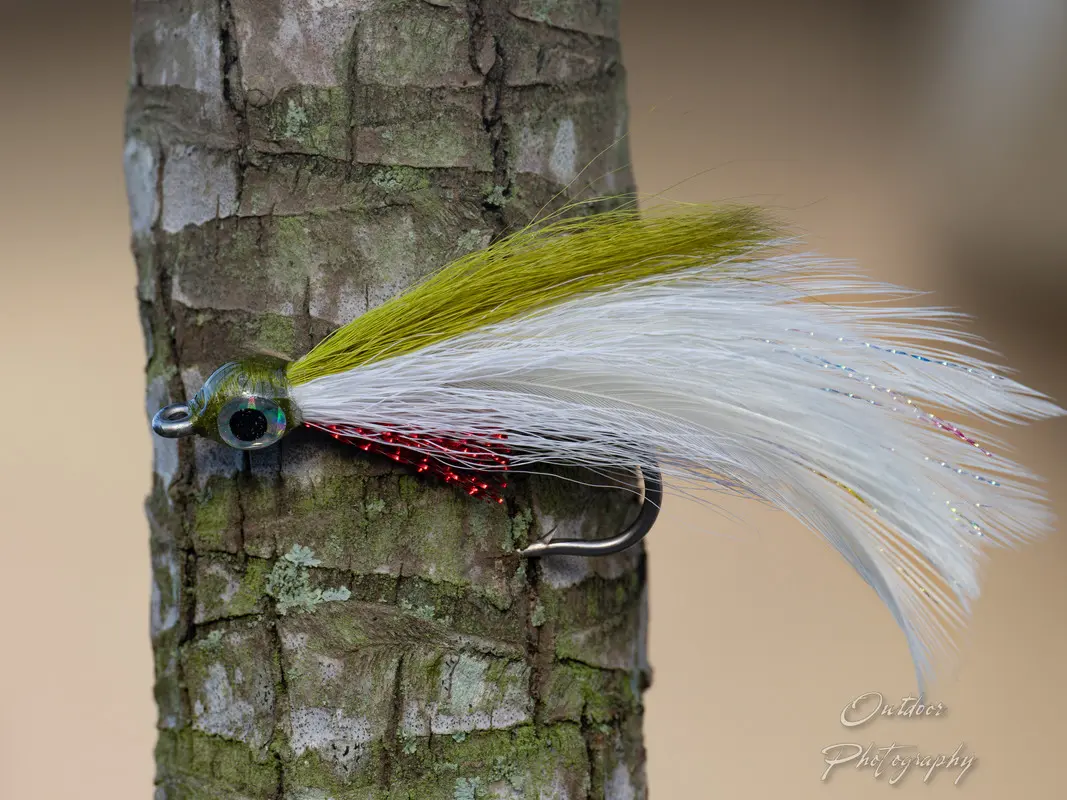Tackle: Fly - Streamers (The Basics)

The Basics of Streamer Fishing
Streamer fishing is especially effective for catching predatory fish like trout, bass, and pike. Streamers imitate baitfish and other aquatic creatures, attracting fish through movement, size, and color. Whether you're a beginner or looking to improve your skills, understanding streamers is essential for success on the water.
What Are Streamers?
Streamers are larger flies constructed from materials such as feathers, fur, and synthetic fibers. Unlike dry flies that float on the surface, streamers are designed to be fished below the surface, often by stripping the line to mimic the movement of fleeing baitfish or other prey. This active retrieval triggers predatory instincts in fish, enticing aggressive strikes.
Types of Streamers
Streamers can be categorized by the prey they imitate and their design purpose:
1. Baitfish Imitations
These streamers mimic small fish species such as minnows and shad.
Examples: Clouser Minnow, Woolly Bugger, Lefty’s Deceiver.
2. Leech Patterns
Designed to imitate leeches, a common freshwater food source.
Examples: Black Leech, Rabbit Strip Leech.
3. Crayfish Imitations
Crayfish are important prey for bass and other predators.
Examples: Crayfish Pattern, Crawdad.
4. Intruder Patterns
Large, flashy streamers developed primarily for steelhead and salmon fishing.
Examples: Intruder, Mini-Intruder.
Color Patterns
Choosing the right color can make a big difference in streamer success. Common schemes include:
- Natural Colors: Browns, greens, whites that closely resemble local baitfish.
- Bright Colors: Chartreuse, pink, orange—effective in murky water or low light.
- Contrasting Colors: Bold combinations designed to catch a fish’s eye and provoke reaction strikes.
Choosing the Right Line
The type of fly line affects how deep your streamer will run. Common lines include:
| Line Type | Description | Use Case |
|---|---|---|
| Floating Line | Rests on the water surface | Shallow water or surface presentations |
| Sink-Tip Line | Weighted front section | Medium depth, versatile presentations |
| Full-Sink Line | Entire line sinks underwater | Deep water fishing |
Pre-Made Rigs
Preparing multiple streamer rigs with different flies and leaders before heading out saves valuable fishing time. Quick rig changes without retying knots allow you to adapt rapidly to changing conditions.
Leader Length and Material
Choosing the right leader depends on your fly line and the weight of your streamer. Here is a general guideline:
| Fly Line Type | Recommended Leader Length | Notes |
|---|---|---|
| Floating Line | 7–9 feet | Longer leaders for subtle presentations |
| Sink-Tip Line | 4–6 feet | Shorter leaders help sink the fly faster |
| Full-Sink Line | 3–5 feet | Short leaders minimize drag and improve control |
Use stiffer leader material for heavier flies to aid in turnover.
Fishing Techniques
1. Control Your Fly
Maintaining control over your streamer increases your chances of triggering strikes:
- Make shorter casts where you can maintain contact with the fly.
- Keep your rod tip active to feel the fly’s movement.
- Use the current to naturally drift your fly into strike zones.
2. Retrieve Techniques
Vary your retrieve based on target species and water conditions:
| Retrieve | Description | Best For |
|---|---|---|
| Strip Retrieve | Short, quick pulls of the line | Active fish, fast-moving water |
| Slow Retrieve | Steady pulls with intermittent pauses | Passive fish, calm conditions |
| Jerk Retrieve | Sharp, erratic pulls to mimic fleeing prey | Aggressive predators |
3. Presentation and Depth Control
Control the depth of your streamer by combining:
- Line type (floating, sink-tip, or full-sink)
- Retrieve speed and style
- Leader length
Experiment to find the right balance for the fish and water you’re fishing.
Tips from Experienced Anglers
-
Carry a Variety of Streamers
Bring multiple sizes, colors, and patterns to match changing conditions and fish preferences. -
Read the Water
Look for current seams, structure, drop-offs, and shaded areas where fish may ambush prey. -
Practice Casting and Retrieval
The more proficient you are, the better your presentations and hook-ups. -
Observe Nature
Notice what baitfish and aquatic creatures are present and adjust your fly choice accordingly. -
Stay Patient and Persistent
Streamer fishing often requires covering water and making many casts. Don’t get discouraged—keep experimenting and adapting.
The World's Most Complete Fishing Resource
We're building the ultimate fishing encyclopedia—created by anglers, for anglers. Our articles are created by real experienced fishermen, sometimes using AI-powered research. This helps us try to cover every species, technique, and fishing spot imaginable. While we strive for accuracy, fishing conditions and regulations can change, and some details may become outdated or contain unintentional inaccuracies. AI can sometimes make mistakes with specific details like local access points, parking areas, species distributions, or record sizes.
Spot something off? Whether it's an incorrect boat ramp location, wrong species information, outdated regulations, or any other error, please use the "Help Us Improve This Page" section below. Your local knowledge makes this resource better for every angler.
Explore Related Topics
Discover more articles to deepen your knowledge
Curating articles for you...
Create your own Research Page using AI
Try our AI assistant for free—sign up to access this powerful feature